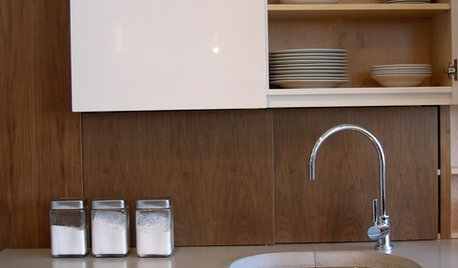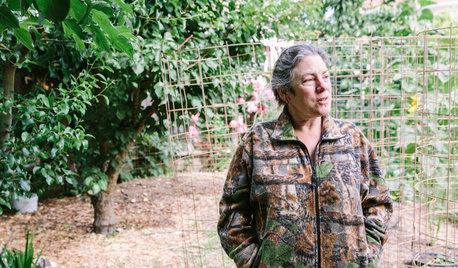Organic fertilizer specifically for JMs--worth it?
dsb_22
18 years ago
Related Stories

GARDENING GUIDESGet on a Composting Kick (Hello, Free Fertilizer!)
Quit shelling out for pricey substitutes that aren’t even as good. Here’s how to give your soil the best while lightening your trash load
Full Story
GARDENING GUIDESHow to Switch to an Organic Landscape Plan
Ditch the chemicals for a naturally beautiful lawn and garden, using living fertilizers and other nontoxic treatments
Full Story
GARDENING GUIDESCommon Myths That May Be Hurting Your Garden
Discover the truth about fertilizer, soil, staking and more to keep your plants healthy and happy
Full Story
MORE ROOMS6 Garage Organizing Tips That Really Work
National Clean Out the Garage Day: Here's how to clear the clutter and organize what's left
Full Story
DECORATING GUIDESGet Organized: A Place for Your Pets' Stuff
Live in style with your cat or dog thanks to special places for their food, bed and toys
Full Story
KITCHEN DESIGN8 Kitchen Organizing Ideas for Messy Cooks
Not the clean-as-you-go type? Not to worry. These strategies will help keep your kitchen looking tidy no matter what your cooking style is
Full Story
MOST POPULARGarage Cleaning Tips for the Overwhelmed
Don’t let this catch-all space get the better of you. These baby steps can get you started
Full Story
KITCHEN WORKBOOK8 Kitchen Amenities You'll Really Wish You Had
Keep kitchen mayhem and muck to a minimum with these terrific organizers and other time-saving, mess-preventing features
Full Story
FARM YOUR YARDTo Get the Food They Believe In, These Urbanites Grow Their Own
Home gardeners farming on their city lots find that local, organic food isn’t the only reward
Full Story
HEALTHY HOMEDetox Your Kitchen for the Healthiest Cooking
Maybe you buy organic or even grow your own. But if your kitchen is toxic, you're only halfway to healthy
Full StorySponsored
More Discussions






mjh1676
dsb_22Original Author
Related Professionals
Arlington Landscape Architects & Landscape Designers · Barrington Hills Landscape Architects & Landscape Designers · Jennings Landscape Architects & Landscape Designers · Manchester Landscape Contractors · Edinburg Landscape Contractors · Fort Hunt Landscape Contractors · Fort Myers Landscape Contractors · Galveston Landscape Contractors · Hollywood Landscape Contractors · Tuscaloosa Landscape Contractors · West Haverstraw Landscape Contractors · North Hills Landscape Contractors · Bothell Fence Contractors · East Haven Fence Contractors · Torrance Fence Contractorsdsb_22Original Author
mjh1676
schusch
myersphcf
gardengal48 (PNW Z8/9)
mjh1676
schusch
dsb_22Original Author
gardengal48 (PNW Z8/9)
ckramos
Embothrium
mjh1676
Embothrium
mjh1676
schusch
Embothrium
gardengal48 (PNW Z8/9)